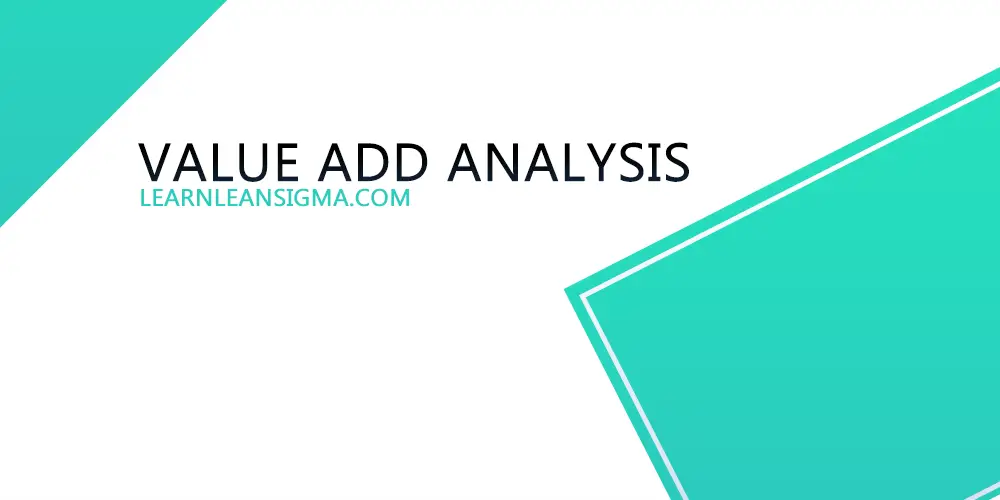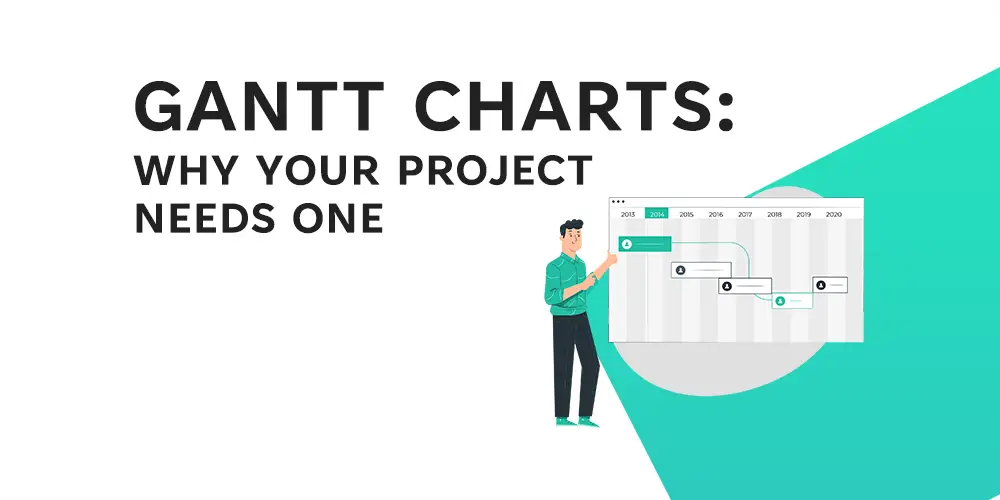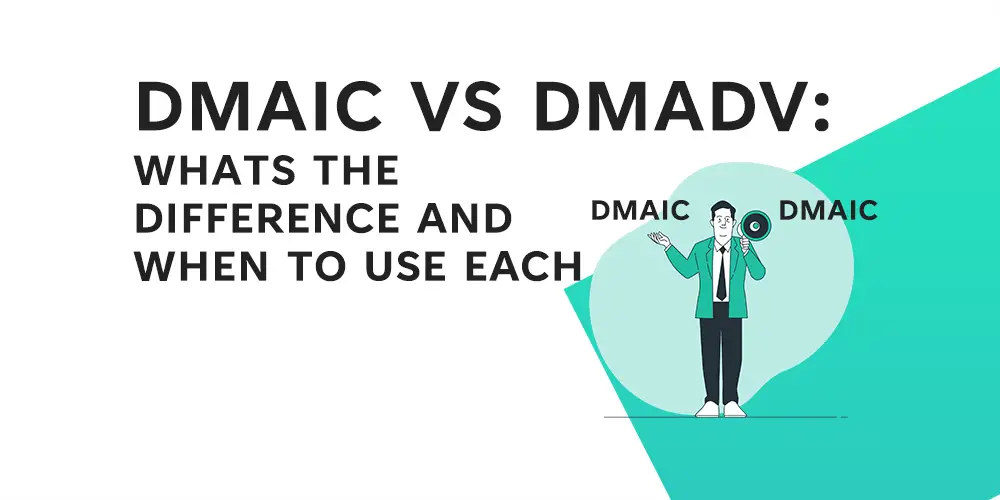In today’s fast-paced business world, staying ahead of the competition requires efficiency. The ability conduct value add analysis to identify and eliminate waste, or non-value-added activities, in your processes can result in significant cost savings and increased customer satisfaction. Lean Six Sigma, a powerful methodology that combines Lean and Six Sigma principles, aims to accomplish precisely that. In this blog post, we’ll look at Value Add Analysis, a key component of Lean Six Sigma that focuses on process optimization by identifying and eliminating waste.
We’ll go over the different types of activities (value-adding, necessary non-value-adding, and non-value-adding), why analyzing processes is important, and how to analyze and identify waste in a process step by step.
Table of Contents
When we are thinking about the Lean part of Lean Six Sigma, we are thinking about how we can make the process as efficient and value-adding as possible, removing or reducing waste or also known as non-value-adding activities from the process.
Waste in our process costs money because it is seen as unnecessary time, material, or labour in the process. Waste is also referred to in continuous improvement as Muda, which is the Japanese word for waste. It describes the concept of being idle, unnecessary, or useless. Muda is also referred to as Non-value added tasks (NVA) within a process.
What is Value add analysis?
When conducting a lean improvement of a process we analyze the process in detail listing all the activities that happen in the process. Part of this analysis should be focusing on what value is each step bringing to the process. Is value-adding? Necessary but not adding any value? or is it a pure waste that is in the process and creates no value for the customer?
No matter the process you are looking at you are certain to find waste. Most business processes are only an estimated 5% to 10% value-adding. whereas a world-class manufacturing company like Toyota rarely exceeds 20%

Value Add Activity
Value-added activities are activities conducted in a process that customers are willing to pay for. They should settle all three of the below criteria to be classified as Value adding.
- Transformation of information materials or people.
- Done right the first time
- The customer wants it.
If it does not meet all three of the above, it is either necessary non-value adding or non-value adding and should be reduced if it cannot be eliminated.
The aim should be to maximise the percentage of the process that is value-adding.
Essential Non-Value Add / Value Enabling
Essential non-value adding or also referred to as Necessary non-value adding tasks are tasks that do not add any value that the customer is willing to pay for and don’t transform information, materials, or people. However, they are not pure waste as they are deemed necessary for the process.
What makes an activity necessary non-value add rather than just nonvalue add? These are process steps that are required for a range of reasons such as regulation/compliance or audits and control that are required.
These steps can only be eliminated from the process if they go further than the regulations require which could make them non-value add to an extent. However, the focus for these types of steps should be to reduce them as a portion as much as possible by streamlining the process steps to process less waste such as taking less time to complete.
Non-value add / Pure waste
Finally, the third category of value-add analysis is non-value add. These steps create no value in the eyes of the customer or is meaningless and non-essential activities that do not add value to the work or enable value to be added. These are muda, and the focus should be to remove these steps from the process where possible if not possible to remove the secondary focus should be to reduce these steps as much as possible.
Why analyze processes?
Some forms of Muda are easier to identify than others, which is why Lean Six Sigma deploys tools such as Value Stream Mapping (VSM) and Value analysis tools. These tools allow you to critically analyze the processes and review the value each step is providing.
By analyzing each process step you will find many process steps are Muda or waste and can start to assess if they can be removed from the process or reduced within the process. This can result in reduced process cycle times, increase production throughput, and reduce customer lead times among other benefits. Overall these improvements to the process will result in savings for the business and can increase margins and competitiveness of the business in its industry.

How to Analyse and identify waste in a process?
Analysing waste in a process is generally carried out after the process mapping stage of a project.
The steps to conducting a value add analysis are:
- Map out the process as a detailed process map, capturing every individual activity.
- If the process is infrequent and you want to review it in detail it can be useful to video record the process to watch it multiple times to collect data and analyse it.
- Review each individual step of the process and capture the following:
- How long did the process take
- How many people are needed for the process step
- Was it value-adding, non-value adding or necessary non-value adding
- Analyse the data to understand:
- The total process time
- The total Value add timeThe total non-value add time
- The total necessary non-value add time
- The value add percentage of the process is then Value add time divided by total time. This is your benchmark for making improvements to the process
- Next, identify the non-value add steps and what type of waste are they. See 8 Wastes (TIMWOODS) for categories of wastes.

These steps allow you to analyze your process and understand the waste in the process and what needs to be improved. Building on this the project team can develop solutions to address the identified wastes. Lean tools such as SMED, Poka Yoke, 5S, Visual Management and Andon may be useful to address many of these issues.
Free Process map waste analysis template

To help you analyze and measure waste in your process we have included this free process map waste analysis template you can use. It helps to break down the process step by step and measure how much time in the process is VA, NVA or NNVA for a starting point and provide an understanding of what percentage of the process is wasted for a baseline to create a SMART target for the future state of the process
Conclusion
In conclusion, most processes in business are made up of mostly wasteful steps including world-leading lean organisations, but that does not mean we should not attempt to make out processes lean. We should seek to remove or minimise non-value adding and necessary non-value-adding steps to free up capacity and resources, improve profitability and importantly increase value to the customer!
Mapping out the current state of the process allows an understanding of how much waste is in a process, we can then analyse and identify how we can remove or reduce waste in the business using lean tools such as Poka Yoke, SMED and 5S.
What’s Next?
Now that you have an understanding of how to identify waste in the process and remove or reduce non-value-adding (NVA) steps and minimize necessary non-value-adding steps (NNVA) Check out the next article in this Lean Six Sigma Yellow Belt series on the different categories of waste in a process and the 8 wastes (TIMWOODS).








